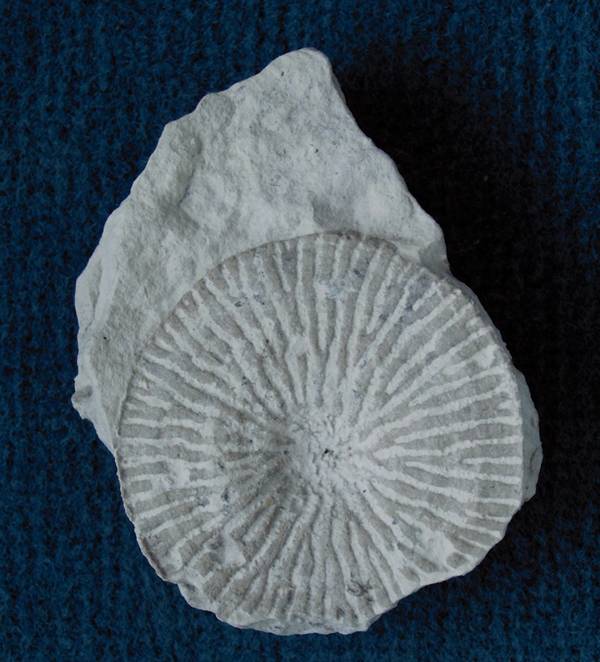
Actinocyclus mirus
Schrammen 1912
Actinocyclus mirus has been described by Schrammen (1912) as a new and very rare species from Oberg (near Ilsede, North Germany). In recent years, incomplete specimens of Actinocyclus mirus have also been found in the Lower Campanian of Höver and Misburg.
The species is umbrella-shaped to disk-like, with a flat or slightly convex gastral surface. The disk is 1.5 to 2 mm thick, with a central depression grading into the stalk. Usually, the diameter of Actinocyclus mirus is distincly less than 100 mm.
The specimen of Actinocyclus mirus shown here shows nicely the radial folds which led to the genus name. The fold ridges are flat to slightly convex in cross section, and approximately one millimeter wide. In the central part, a crude cortical meshwork covers the hollow stem. The radial folds may bifurcate symmetrically, as in the present example, but very often also show asymmetric, multiple bifurcation (see next picture).
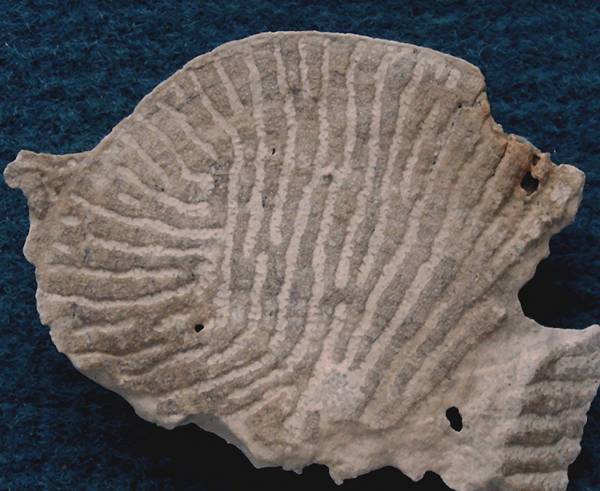
Asymmetrical branching of radial folds, a very characteristic feature of Actinocyclus .
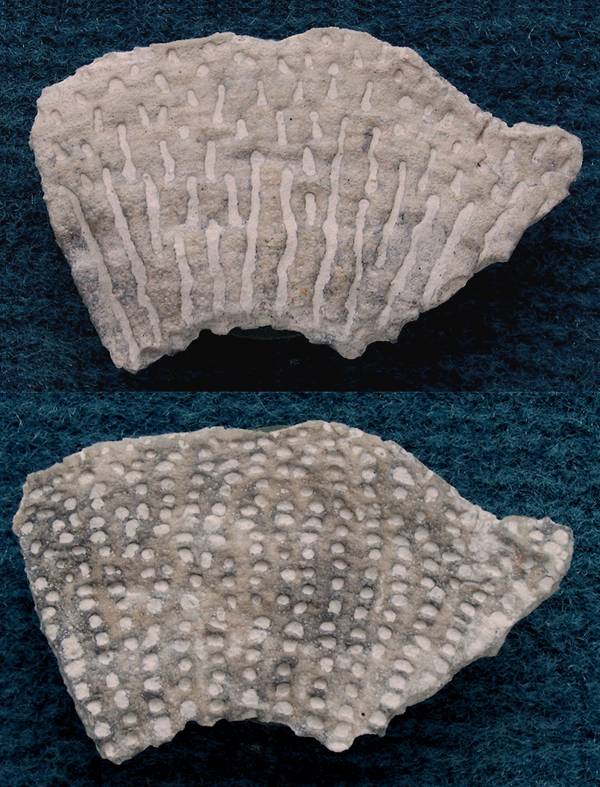
The two images show the same fragment of Actinocyclus mirus from its gastral and dermal side (lower picture is a mirror image).
Notice the discontinuous furrows near the growth margin (upper rim) on the gastral surface. This is also a very characteristic feature of Actinocyclus mirus.
The dermal surface is characterized by the large (1 mm) round ostia, which show a radial arrangement following the radial folds on the gastral side, and lead into their interior. Conversely, the radial bridges separating the ostia correspond to the furrows on the gastral side.
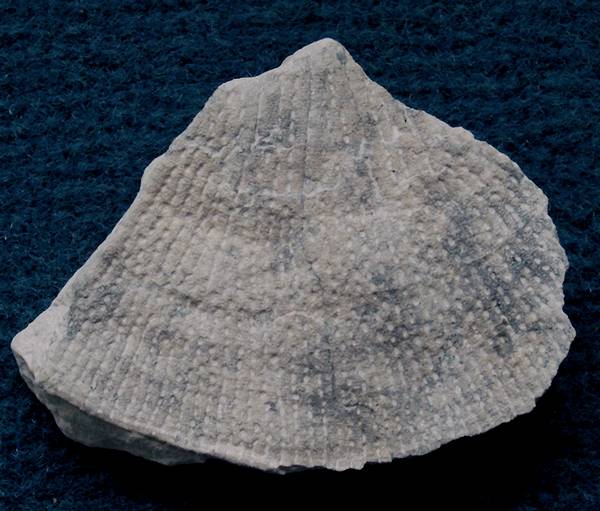
A variant of Actinocyclus mirus. The gastral (!) surface shows very closely spaced radial folds with postica aligned between the folds. In most other cases, the furrows between folds tend to be wider and the postica are situated on the furrow floors.
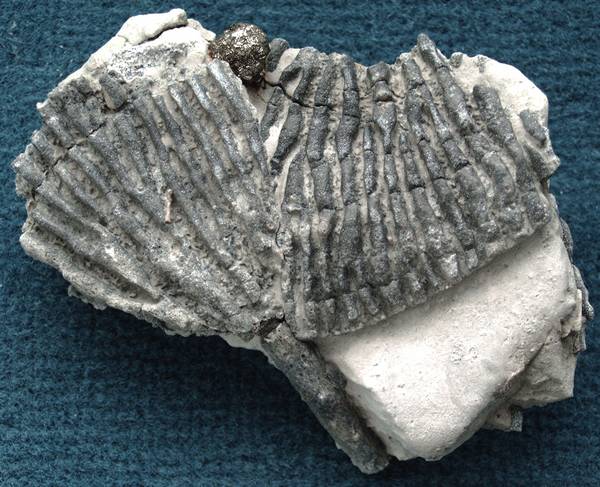
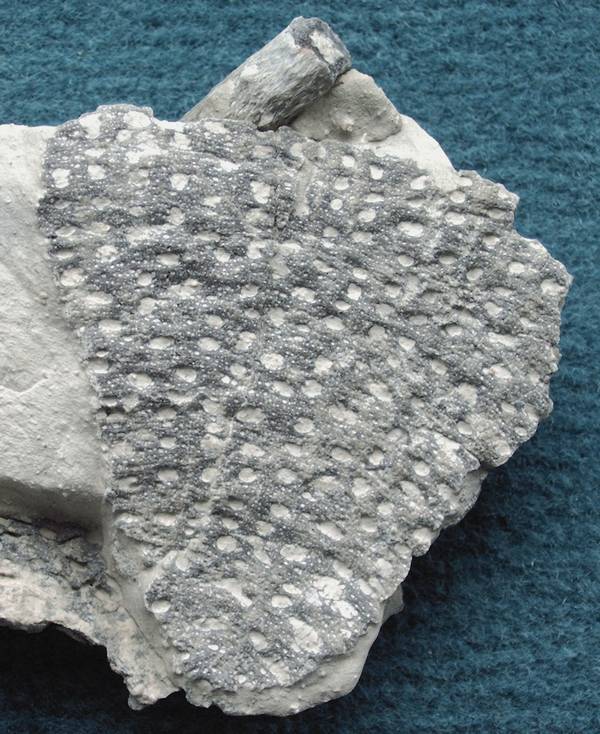
Actinocyclus alternans
Roemer 1841
Schrammen (1912) considered Actinocyclus alternans synonymous with the early reported Coeloptychium alternans of Roemer (1841). As already mentioned by Schrammen (1912), Actinocyclus alternans is a very rare species.
Actinocyclus alternans is considerably larger (may exceed 100 mm in diameter) and has thicker walls (3 to 5 mm) than A. mirus.
The two images show aspects of a crushed individual of Actinocyclus alternans. The present specimen had a diameter of approximately 120 mm, and the radial rib crests are spaced 5 mm apart and are distinctly convex in cross section. The ostia (lower image) are 2 mm in diameter.
Notice also the slender (7 mm) and hollow stem fragment in the two images.
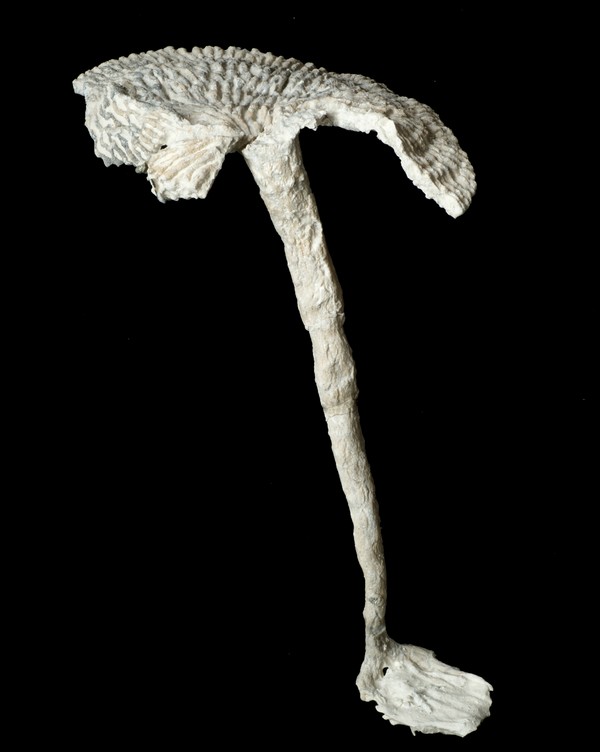
A recently found specimen of Actinocyclus alternans with stem and roots.
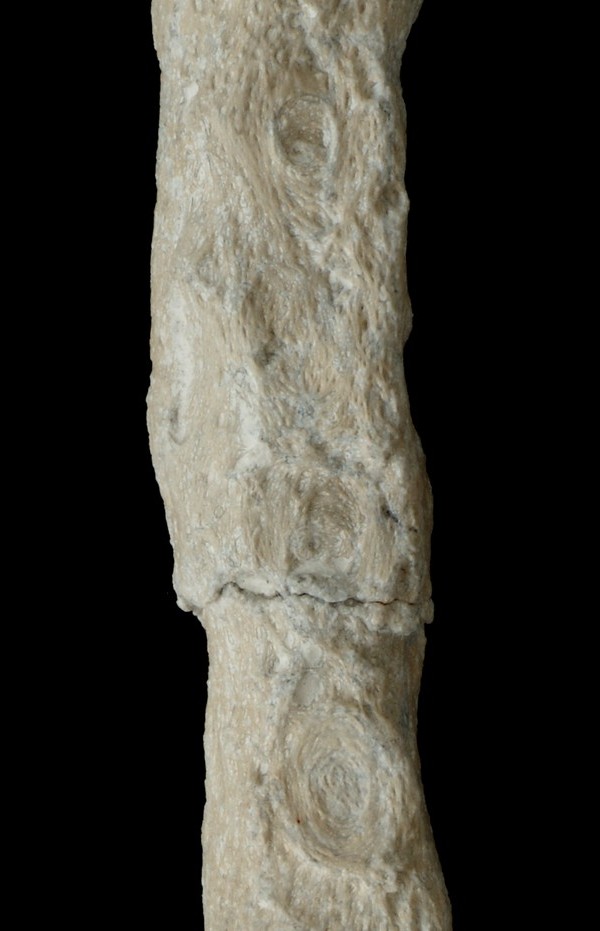
Detail of the stem of the above specimen.
The stem of Actinocyclus alternans shows a peculiar pattern of aligned circular spots, typically some 3 to 7 mm wide. The spots are developed along the entire length, but only in a single row on one side of the stem. These spots are thought to have originated as parietal oscula which were shut by a web of cortical filaments at a later stage.
.jpg)
Reproduction of Actinocyclus alternans (etched specimen). From Schrammen (1912) Plate XXIX, Figure 1.